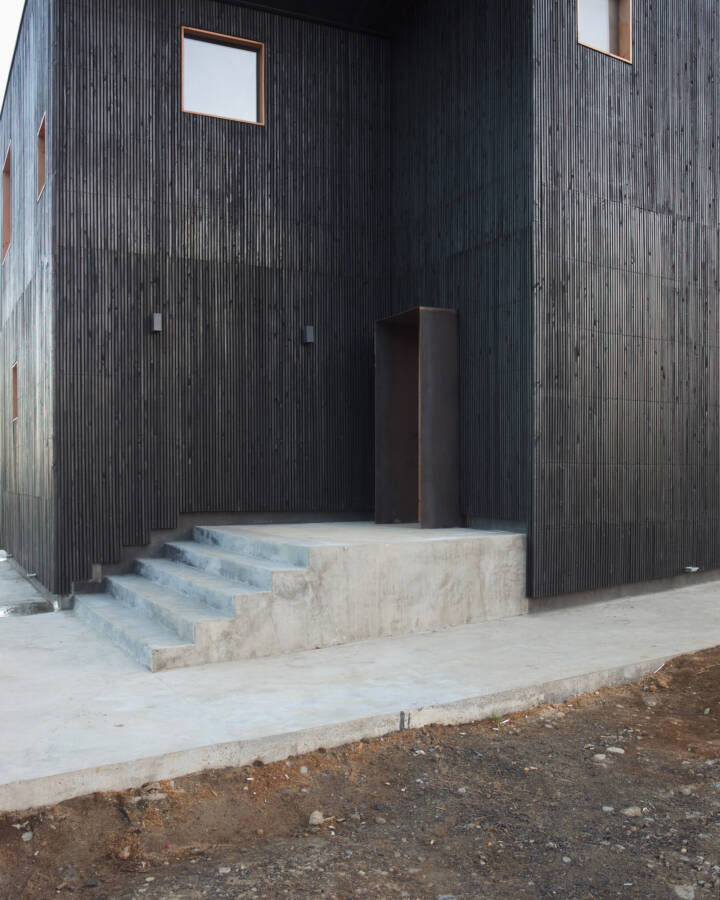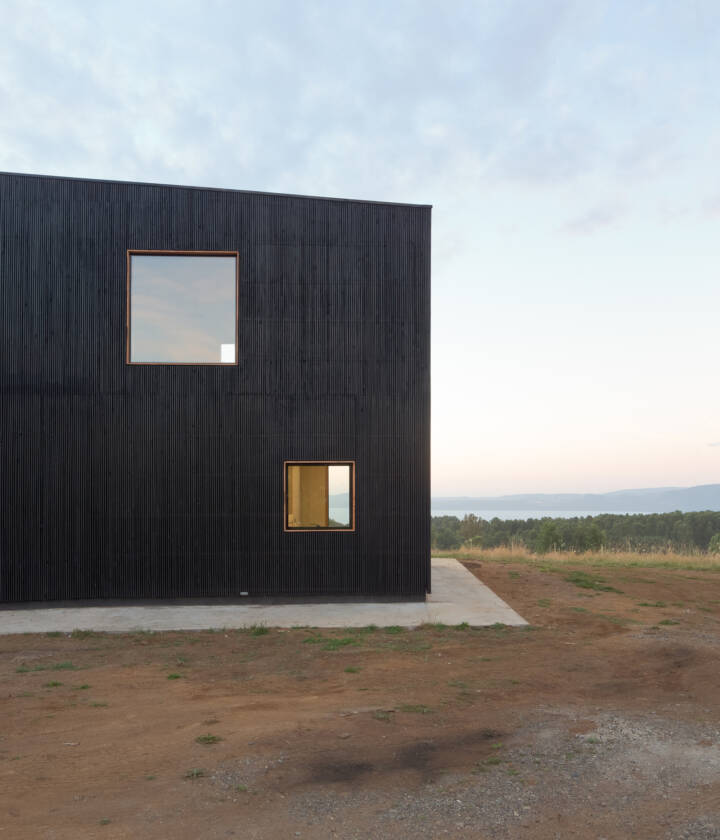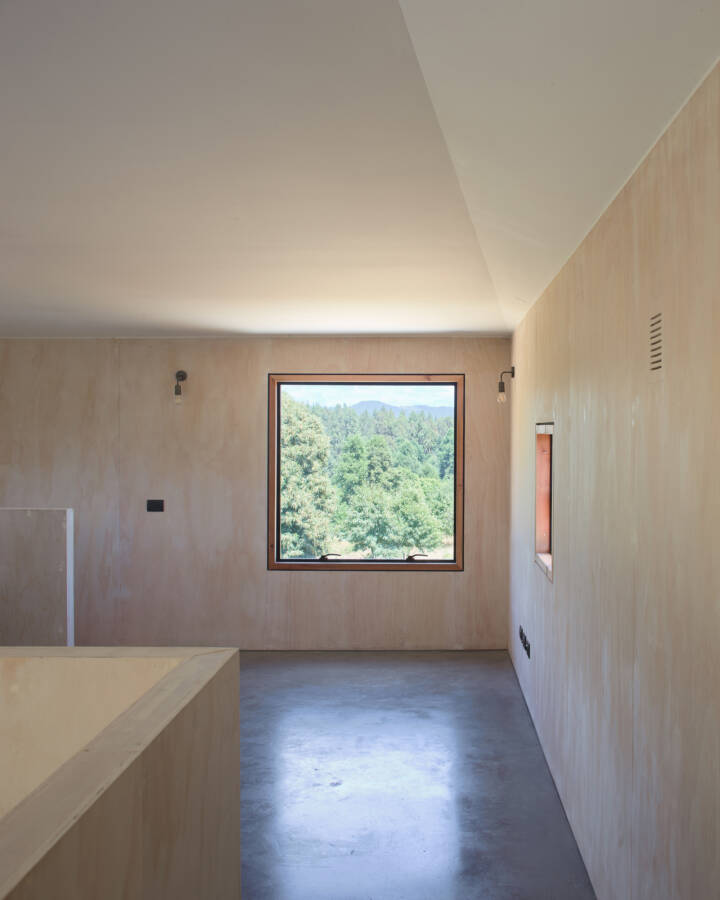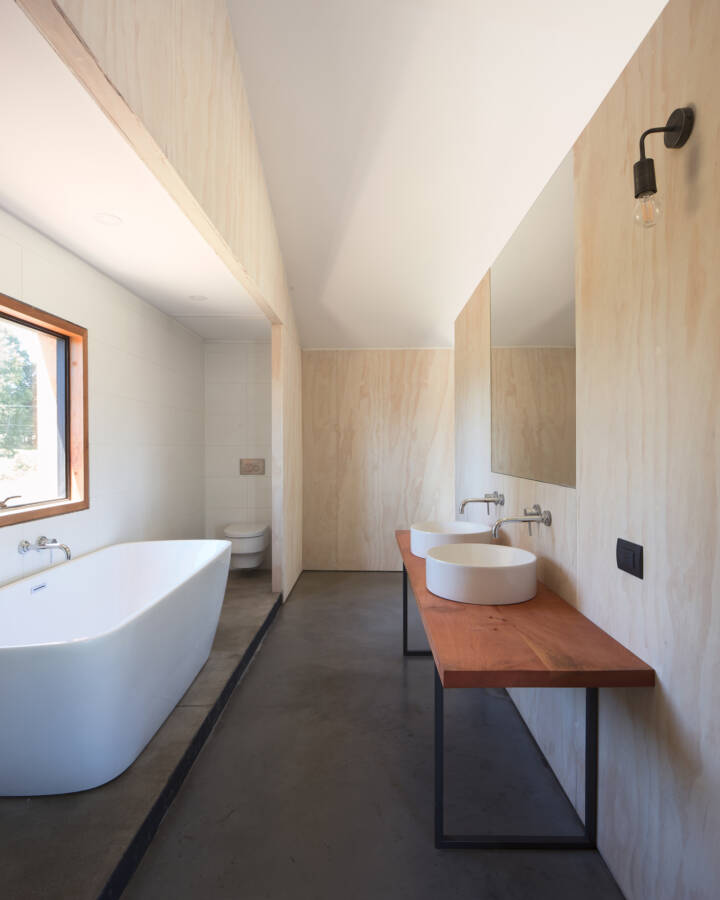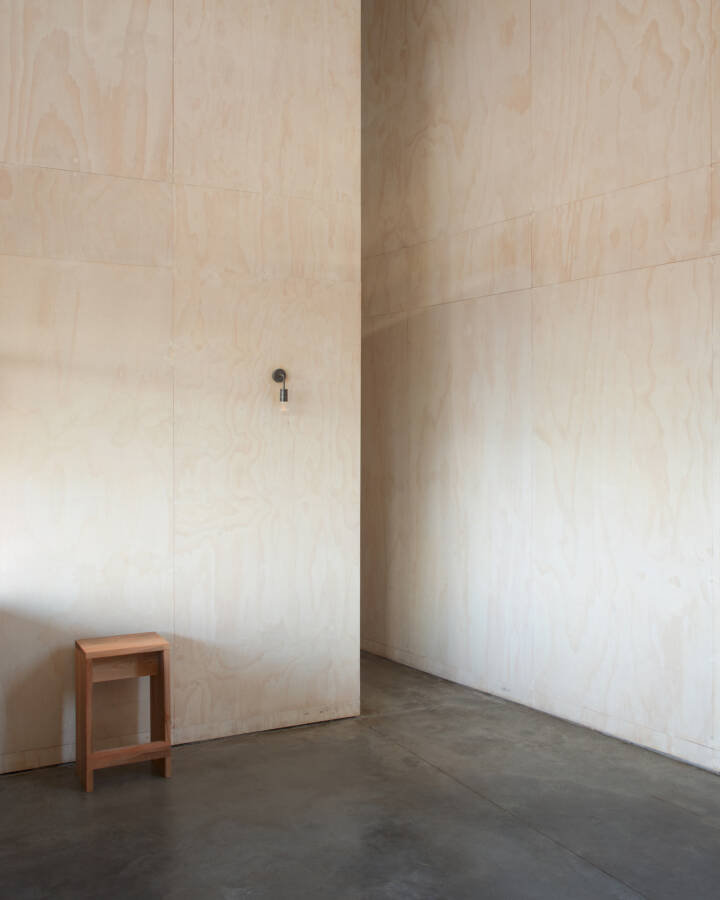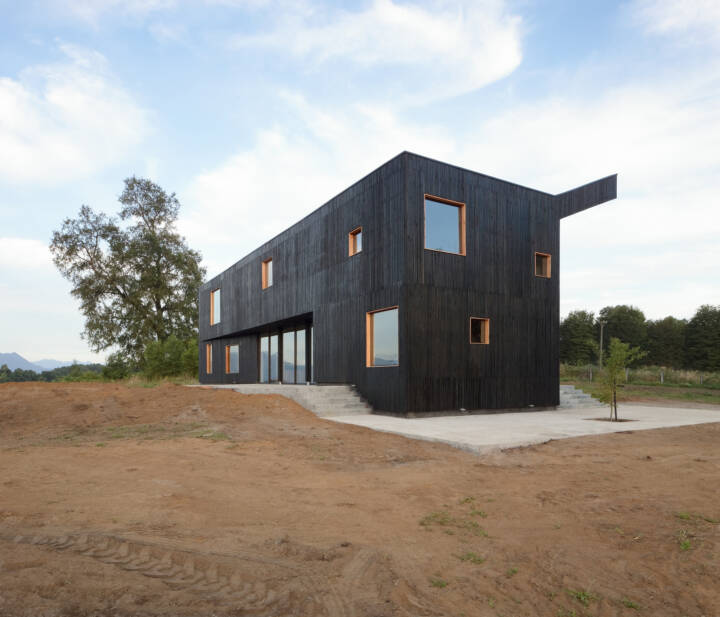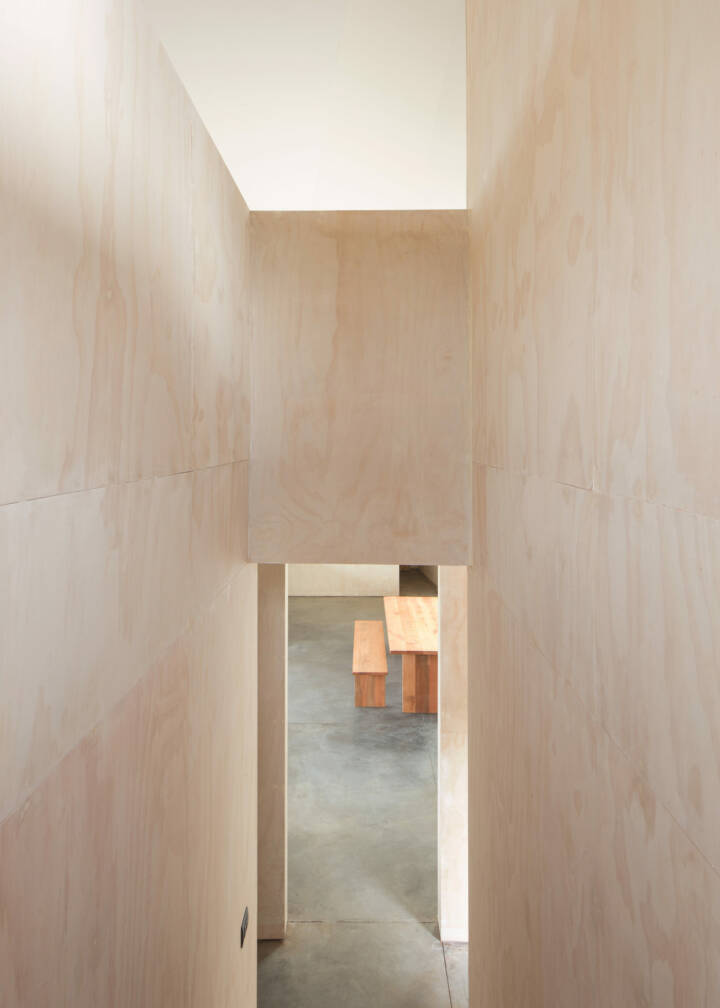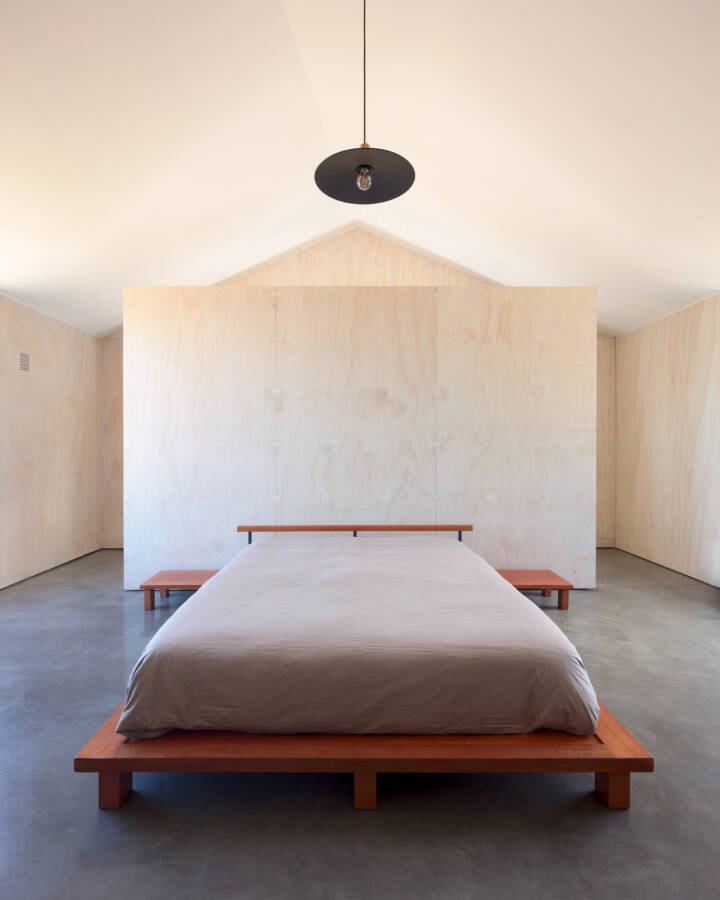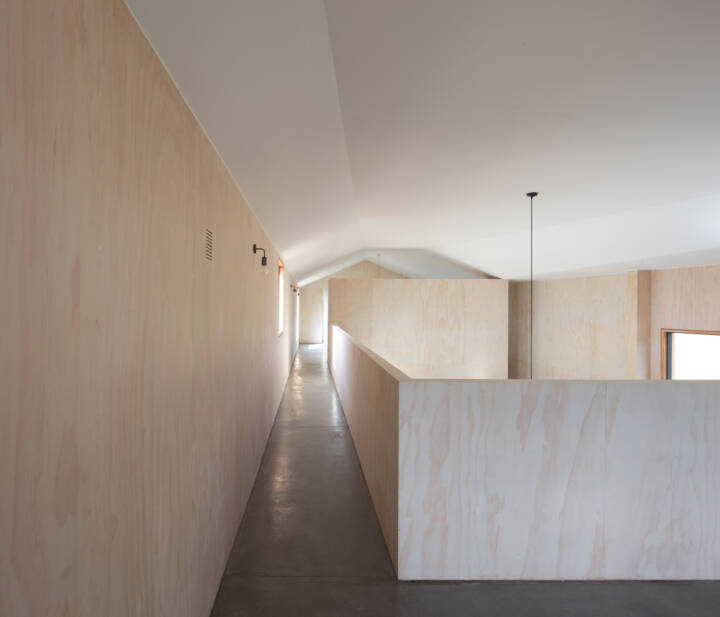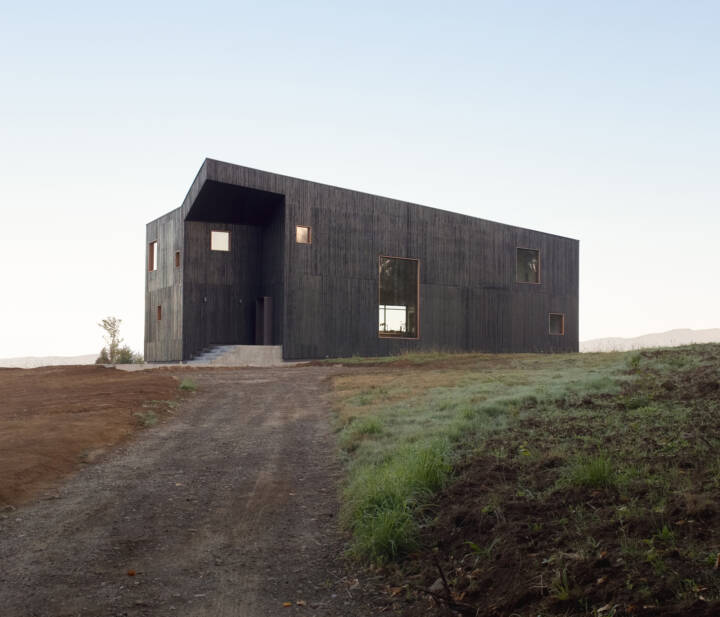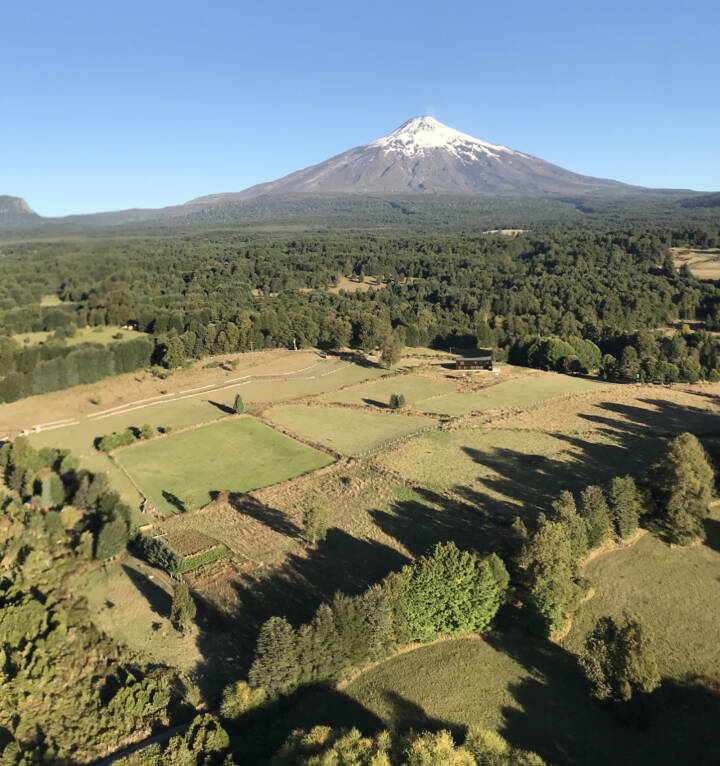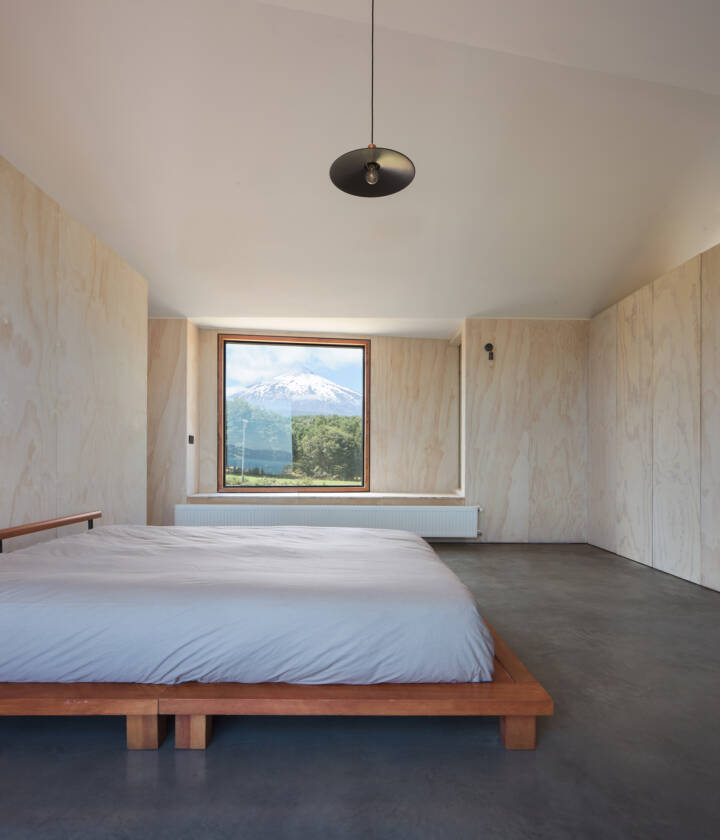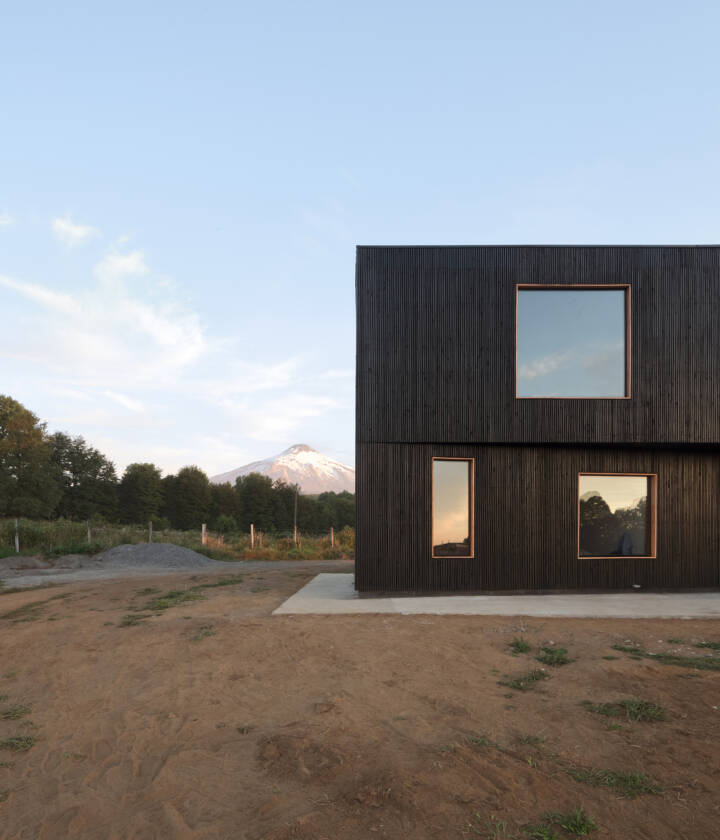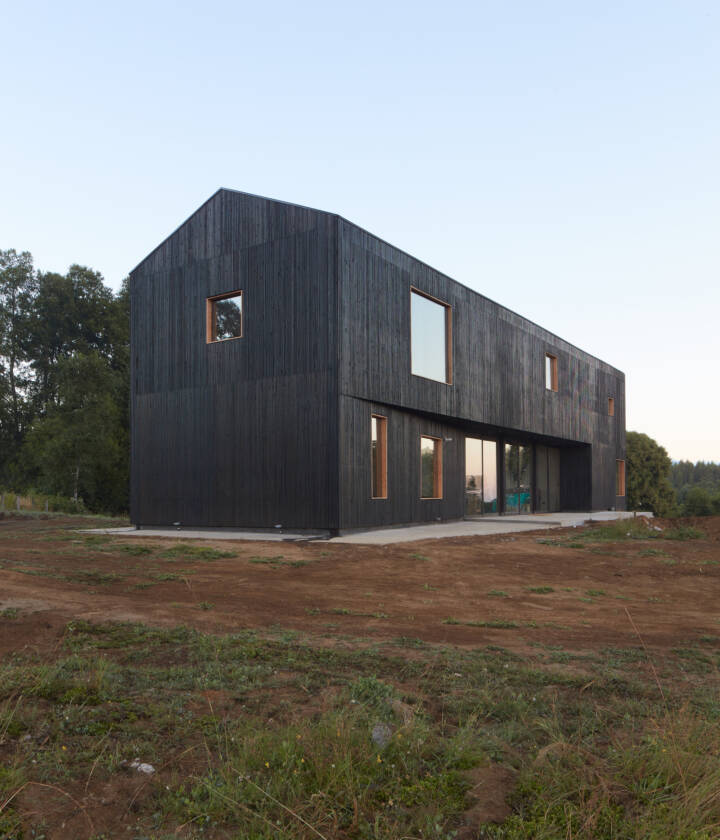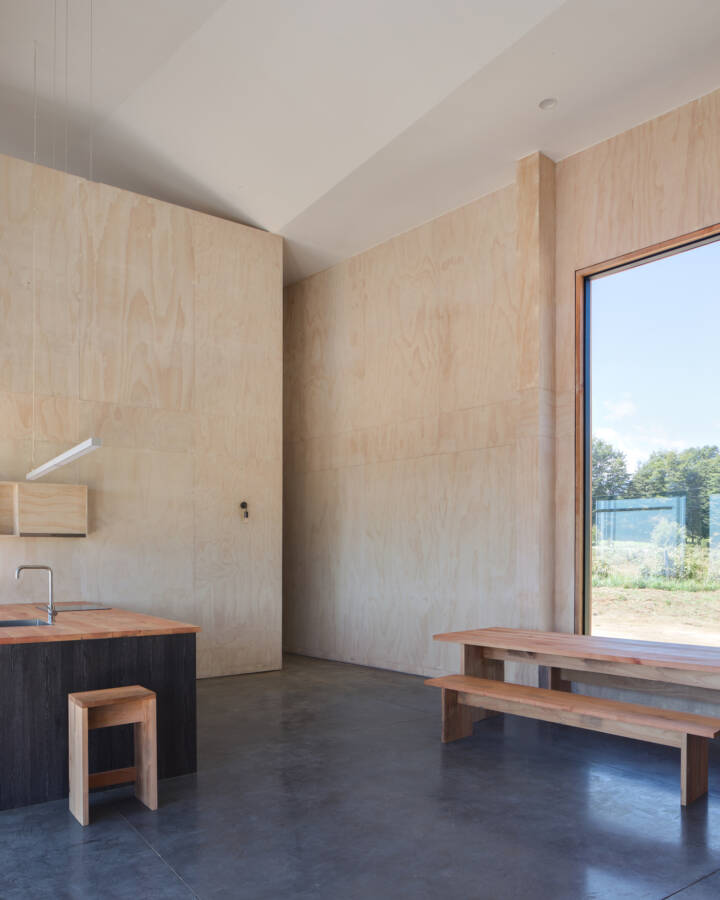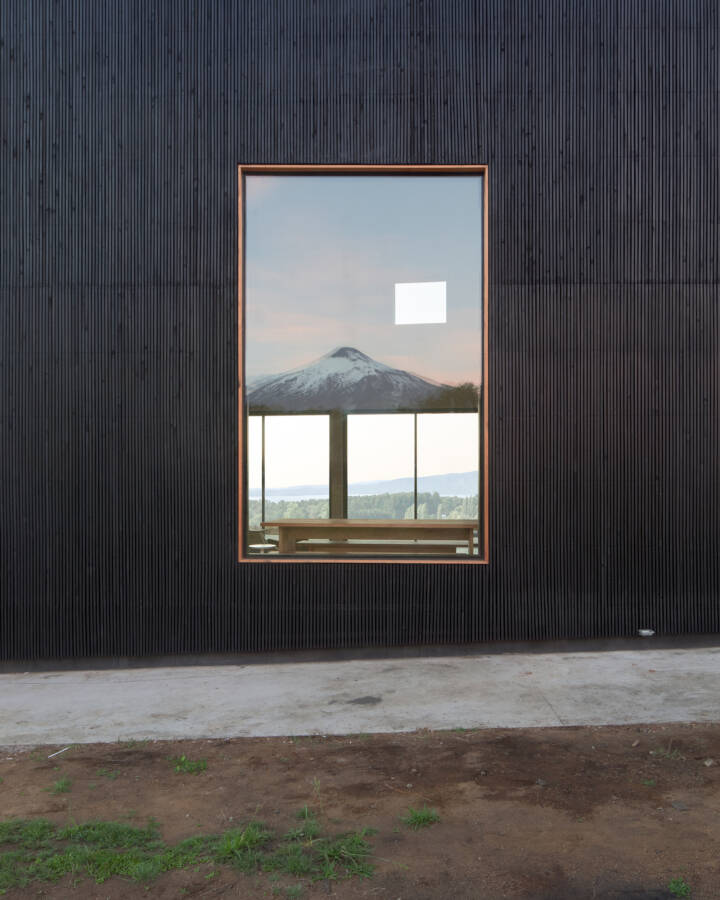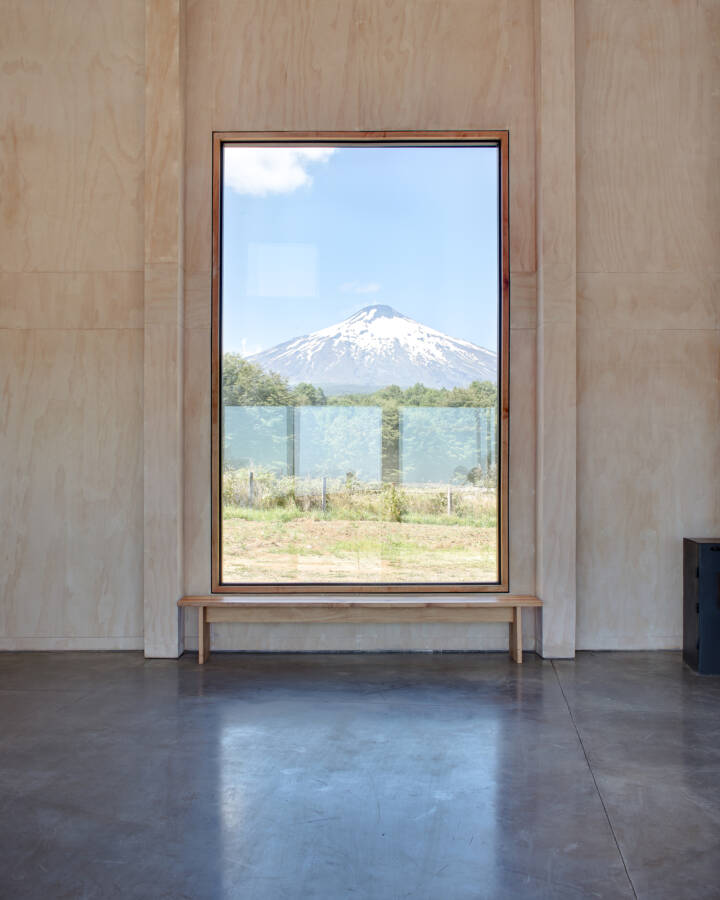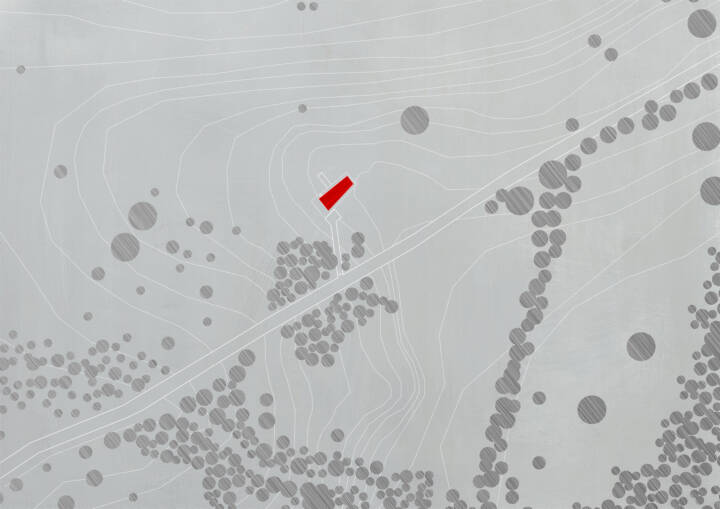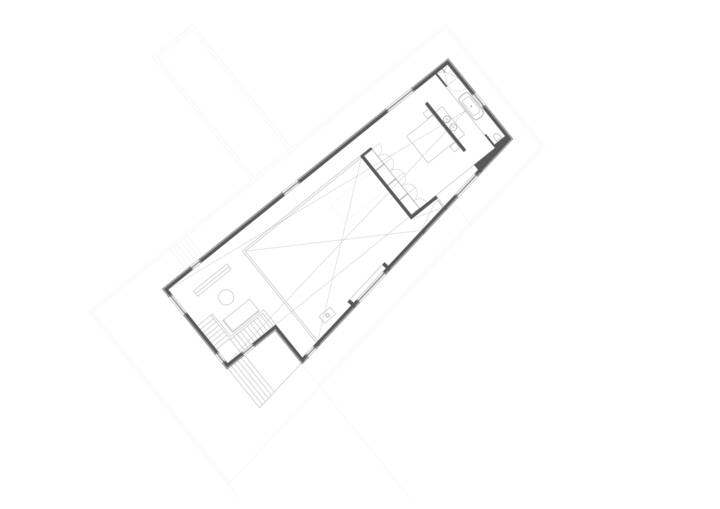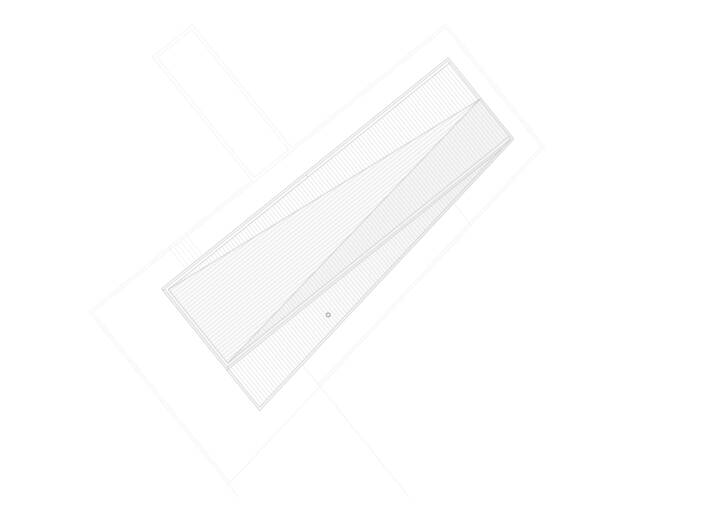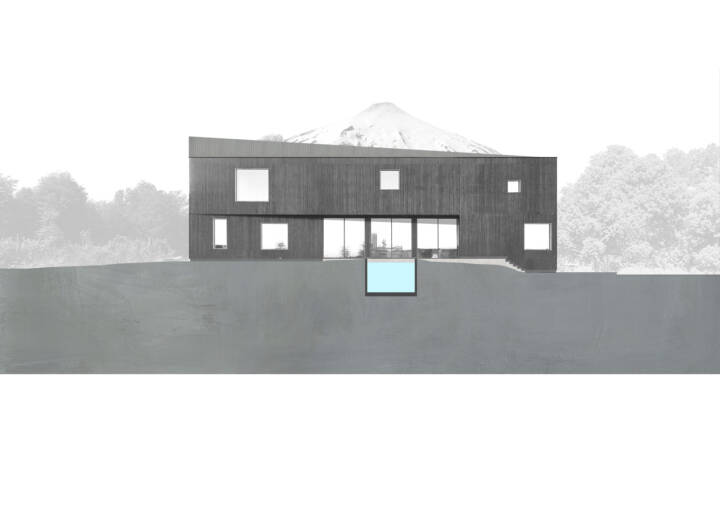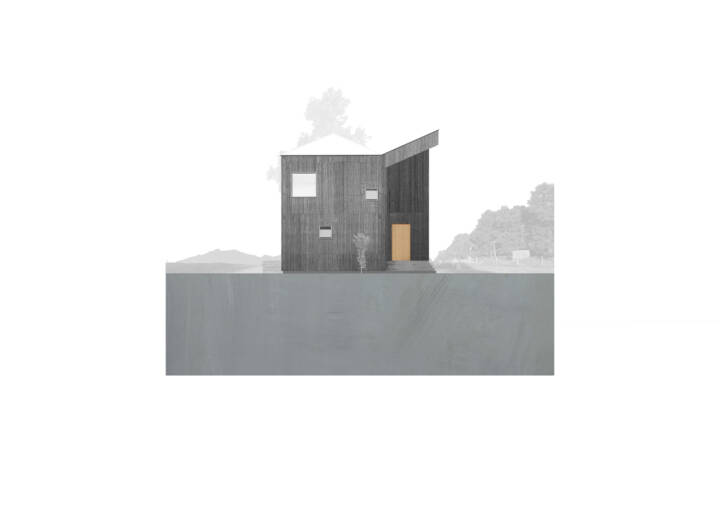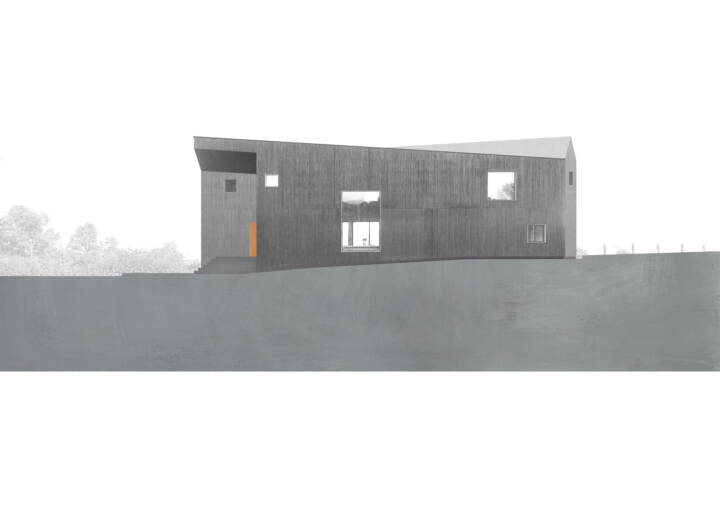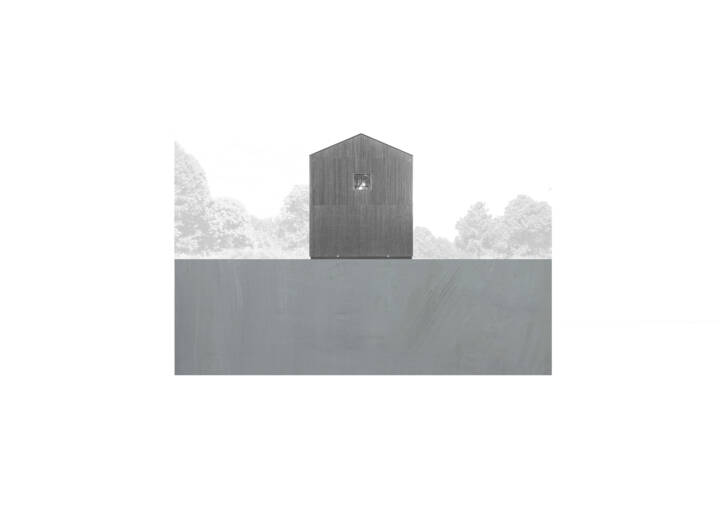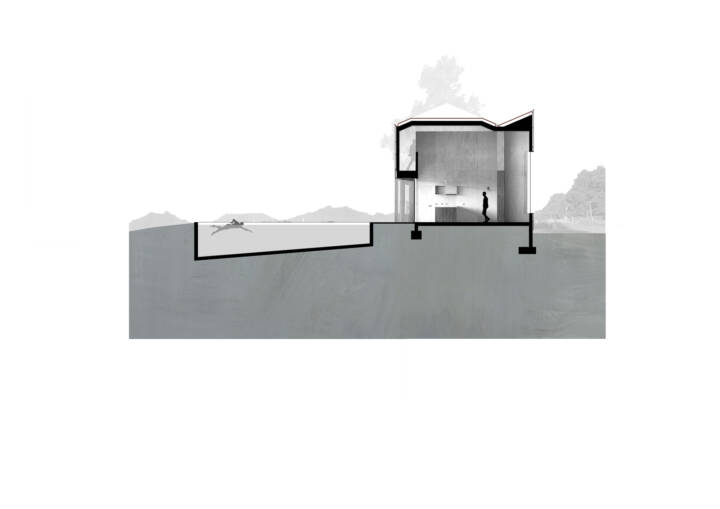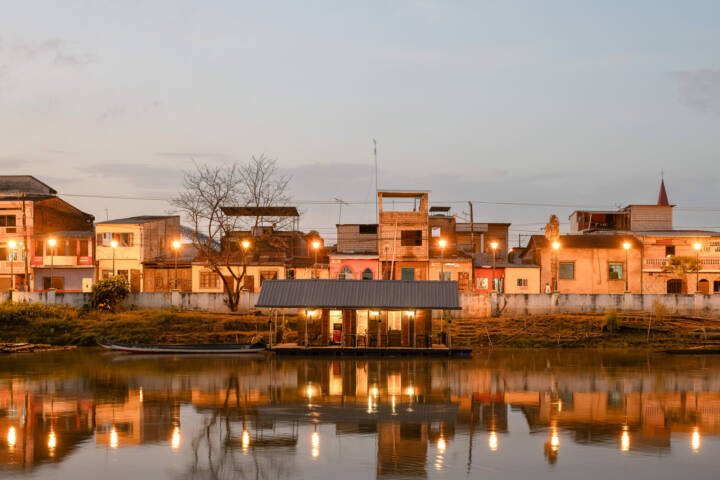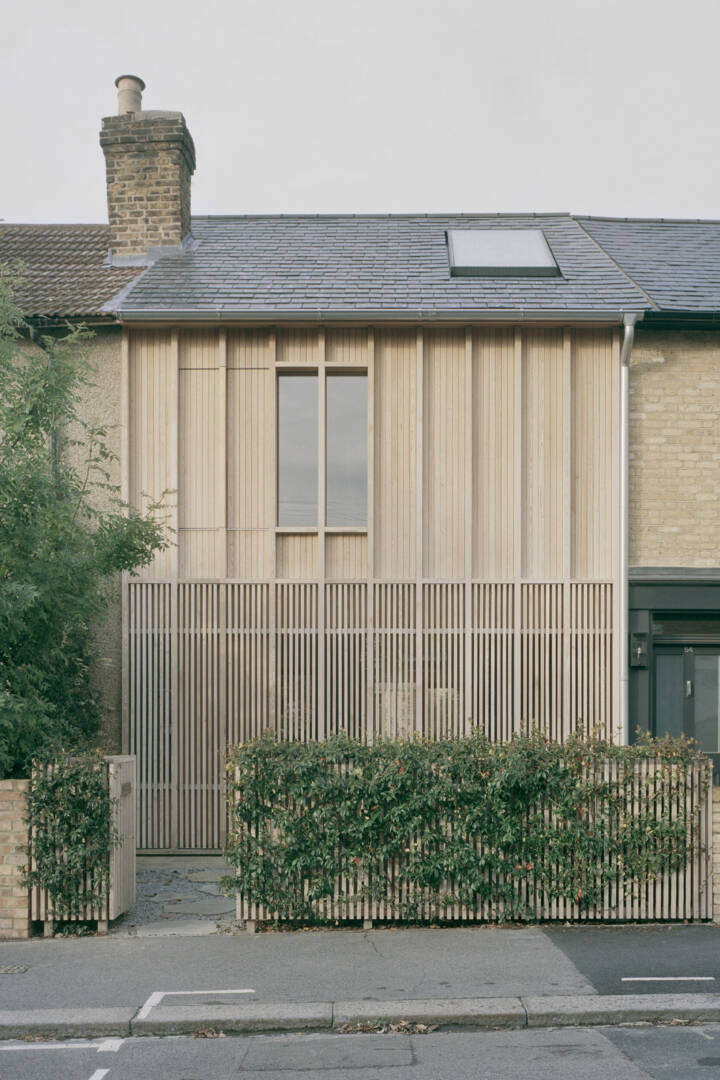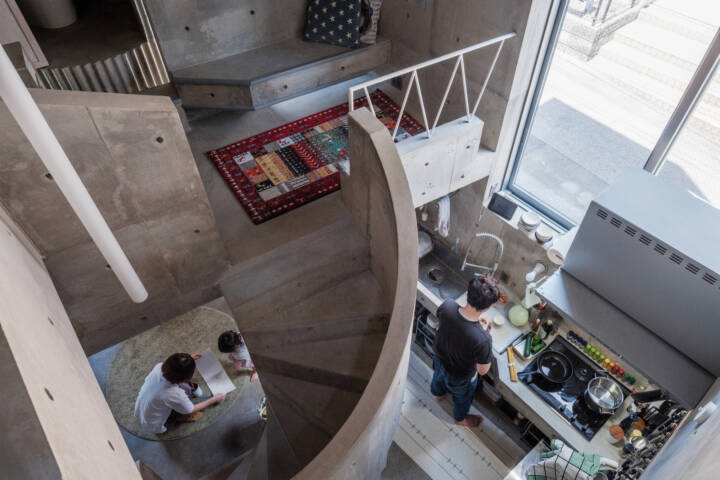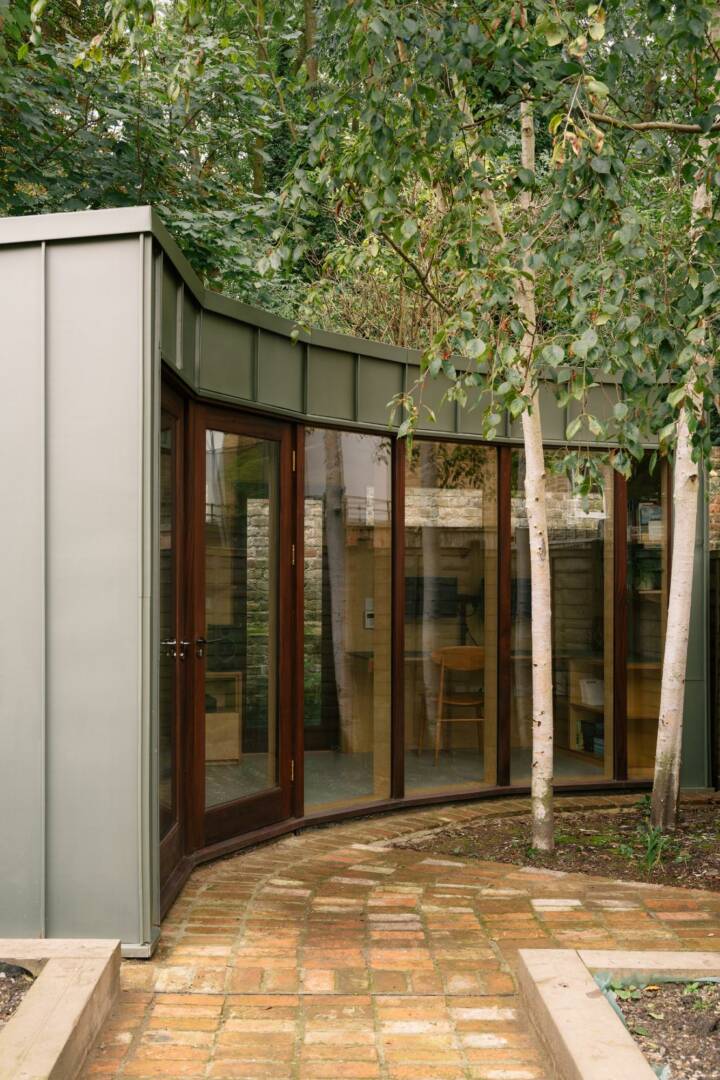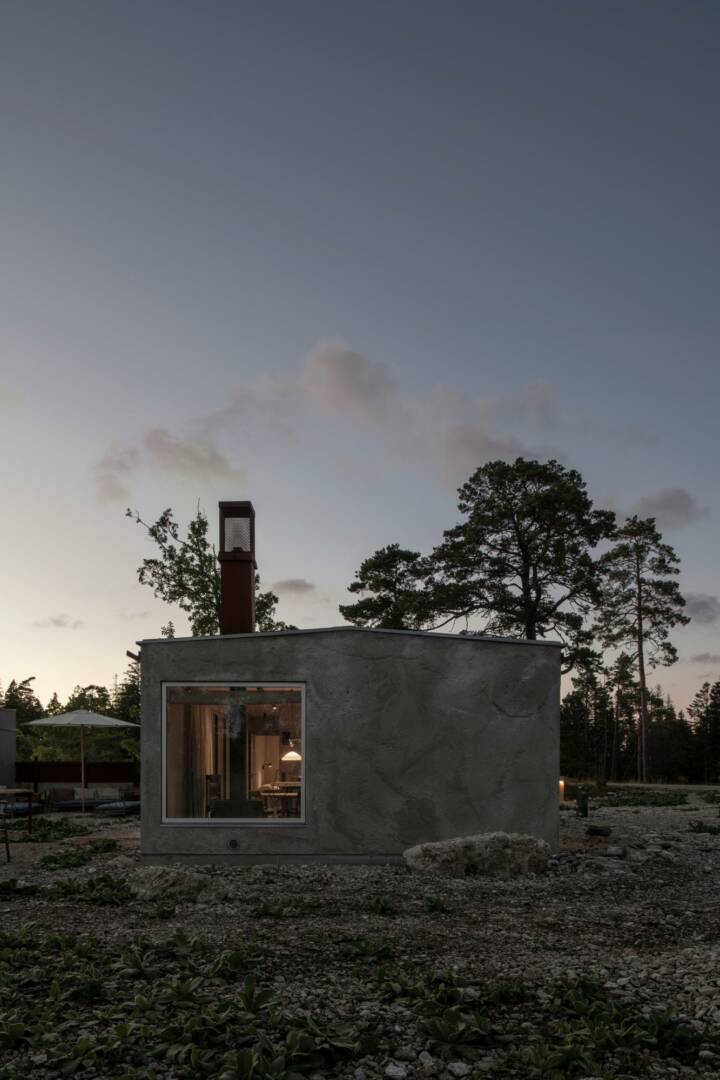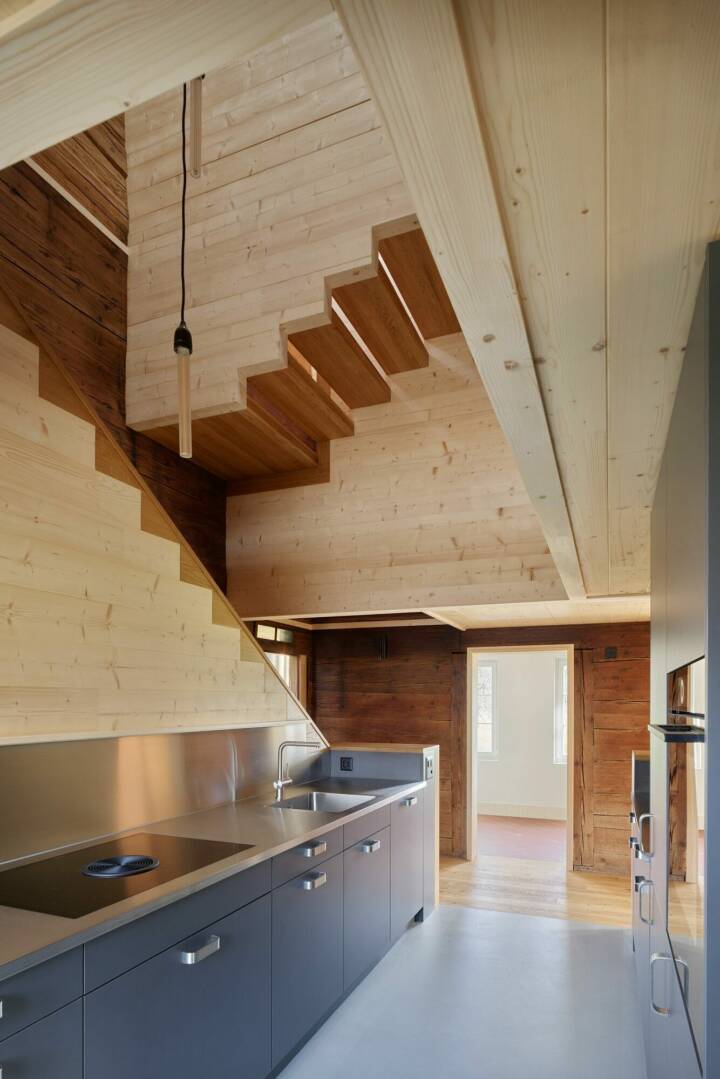Architects: Ampuero Yutronic Photography: Felipe Fontecilla Construction Period: 2018 Location: Pucón, Chile
Hualle House is a 230m2 family home located in the southern Araucania region of Chile, renowned for its natural beauty.
Place Response
The house sits on the central brow of the land, taking advantage of the aspect afforded on all sides by this elevated position. Approaching by road the house appears as a prominent simple black form on the hillside, reminiscent of large agricultural pitched-roof sheds found in the area.
Sitting on a gently sloping site in the rural foothills of the Villarrica volcano and the lake below, the house embraces this natural environment and the outstanding views afforded by its privileged setting. The two-storey building form and orientation is a response to this sloping terrain of the land and the microclimate of the area.
Building Form
Initially conceived as a simple rectangular volume, the design evolved through a series of manipulations and interventions to create the more sculptural form of the building:
1.Extending the building footprint on the south side, creating an irregular floor plan and volume;
2.Cut-out in the volume to signify the entrance;
3.Recess to the north facing glazing at ground level;
4.Roof geometry transformed into a series of folding planes.
Material and Construction Elements
The house is clad in vertical dark-stained softwood slats to resemble some of the buildings in the area that are clad in the black volcanic stone of the region. Dictated by the internal views to the outside landscape, the windows vary in size and position, creating a seemingly random composition on the building exterior.
In contrast to the dark exterior, the interior walls are lined in pale, almost white, stained plywood. The warmer color of the natural wood surrounds of the windows, which line the entire depth of the wall, punctuate this interior blank canvas acting as picture frames to the outside views. Emulating the folding geometry of the roof structure, the ceiling flows sinuously for the entire length of the interior. Exposed concrete floors, incorporating black volcanic aggregate, contrast with the pale walls and ceiling.
Interior Arrangement
The accommodation of the house is arranged simply around a central double height volume. This central space is orientated on a north-south axis with large glazed openings exploiting the views of the volcano and the lake. The north glazing, a series of opening metal-framed sliding doors, takes advantage of the low winter sun entering deep into the space, which is otherwise protected during the summer months by the external overhang of the building. This central space is the social heart of the home, accommodating the kitchen, dining and living space at ground level. Two separate guest bedrooms and bathrooms are located at ground level to either side of this space on the east and the west sides of the house. The master bedroom and bathroom on the first floor is accessed by stair via the studio, library and gallery walkway that overlook the main central space.
Sustainability/Energy Strategy
Due to its remote location the house seeks to be as environmentally self-sufficient as possible. This is achieved by a series of passive measures and interventions;
-building orientation and highly insulated exterior (beyond regulatory requirements);
-window sizes & positions that maximise or minimise solar gain where beneficial;
-utilising the thermal mass of the interior exposed concrete surfaces to regulate the internal temperature;
-heating primarily provided by a wood burning stove located in the heart of the house. This stove incorporates a unique filtration system which aims to minimize smoke being released into the external environment.
Text provided by the architect.

